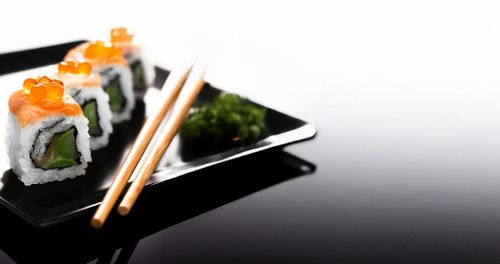HISTORY
500 B.C:
Sushi originated in Southeast Asia near the Mekong Delta, spreading to China and Japan. It began as narezushi, where fermented rice preserved aged fish for up to a year. Only the fish was eaten, and the rice was discarded.
1500s:
In Japan, namanarezushi evolved, using vinegared rice and fresh, partly raw fish. Both the fish and rice were consumed, shifting from preservation to a fresh dish.
MID-1700s:
The invention of sheet-form nori (seaweed) allowed for the creation of makizushi, or sushi rolls, which are popular today.

1800s:
Sushi transformed into hayazushi or nigirizushi, with raw fish placed on seasoned rice. Hanaya Yohei modernized sushi, making it a street food snack sold at stalls known as edomaezushi near Tokyo.
EARLY 1900s:
Japanese immigrants introduc ed sushi to the West. After WWII and Japan’s international trade reopening, sushi began gaining global recognition.
1960s:
Western adaptations, like the California roll, made sushi appealing to middle-class America. Sushi rolls allowed chefs to meet rising demand efficiently.
1980s:
Sushi’s international popularity led to commercialization and automation, making it widely available and affordable.
TODAY:
Sushi ranges from everyday supermarket offerings to high-end dining experiences worldwide, blending tradition and innovation.

.svg)



.svg)